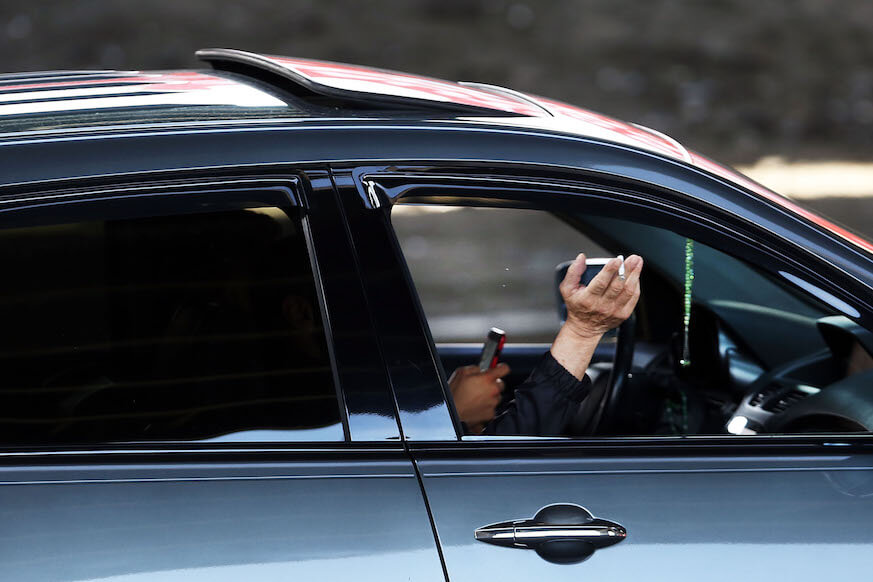Stand on a street corner — any street corner — and watch people driving their cars. You’ll probably notice something: A good portion of people are using their phones. And they’re not talking on them; their heads are tilted downward, off the road, using their smart phones.
As a cyclist who regularly witnesses distracted driving, seeing someone with a phone to their ear — and not in front of their face — is often a cause for celebration.
According to an AT&T survey released in May 2015, 27 percent of those drivers, ages 16 to 65, were probably using Facebook behind the wheel. One in 10 in that study admitted to video chatting while driving; 17 percent were probably taking selfies; 33 percent were emailing; and 61 percent were texting.
And things have only gotten worse since then. Data released this month by Zendrive found that 88 percent of drivers are using their smart phones behind the wheel, as first reported in Streetsblog. And there’s a way to stop it — if we want to.
Distracted driving isn’t just responsible for the deaths of thousands of people in the U.S. each year (federal agencies put conservative estimates around 4,000 dead due to distraction), it’s also one of the reasons would-be cyclists stay off the roads all over the country.
Research conducted at Oregon State University has found that taking your eyes off the road for just two seconds can make a collision 24 times more likely on the road. And current distracted driving rates are “rising at levels not seen in 50 years,” according to a 2016 New York Times report.
So how do we stop it? Easy. We get the cell phone companies to utilize the technology they’ve already developed.
Apple has had technology to lock its users out of their phones while driving since at least 2008.
The patent for the technology, according to a lawsuit that unearthed the information, actually hits on the danger of using phones while driving. “Texting while driving has become so widespread that it is doubtful that law enforcement will have any significant effect on stopping the practice,” reads Apple’s patent. “Teens understand that texting while driving is dangerous, but this is often not enough motivation to end the practice.”
In light of this admission by the companies that make cell phones — and the growing evidence that cell phone use is addictive — very little has happened.
“For those customers who do not wish to turn off their iPhones or switch into Airplane Mode while driving to avoid distractions, we recommend the easy-to-use Do Not Disturb and Silent Mode features,” Apple told the New York Times last year.
That’s not good enough. People are increasingly allowing their smart phones to control many aspects of their lives. And cell phones have the somewhat scary, dystopian feature to detect when you’re in a car, and they can detect when you’re the one driving. We all seem to be OK with that, so why not take it a step farther? It’s time to free ourselves from distracted driving.
Randy LoBasso is communications manager of the Bicycle Coalition of Greater Philadelphia.




























